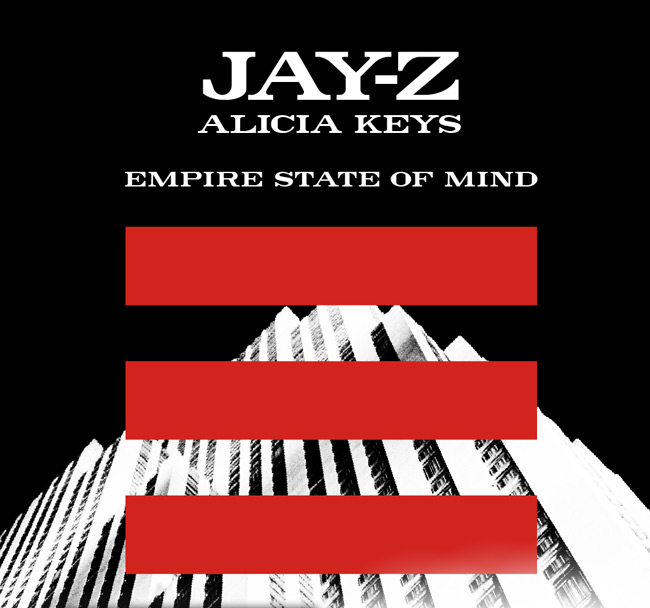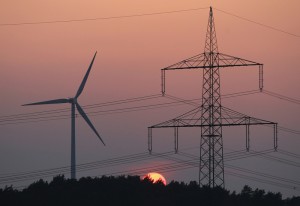Why do some American cities diversify, improve, innovate and grow? While other cities – most recently and egregiously Detroit – stagnate, shrink, and ultimately fail financially?
I’m way outside of my intellectual comfort zone when it comes to commenting on urban planning policy, but reading Jane Jacobs’ classic The Death and Life of Great American Cities this summer has armed me with enough thoughts to be dangerous.1
Jacobs published this over fifty years ago, but her observations and arguments seem right on target.
I visited New York City last week – my home for 13 years but now just a vacation spot for me – and I heard Jacobs whispering in my ear about the whys and hows this continues to be a dynamic, innovative, prosperous place. It’s the most exciting place on planet Earth to walk around, stone cold sober, on any given Thursday at 2pm.
A serious homer
If there’s any obvious critique of Jane Jacobs, she’s what the sports fan world calls a serious homer. She loves her Greenwich Village circa 1960 (The Death and Life was first published in 1961), and she returns again and again to the ways in which her diverse neighborhood outshines anywhere else.
She considers and praises certain other successfully rejuvenated neighborhoods within great American cities, such as Boston’s North End, Chicago’s Back-of-the-Yards, Rittenhouse Square in Philadelphia, and Georgetown, in the District of Columbia.
But virtually all other cities she ignores or – like Los Angeles – actively denigrates. The rest of urban and suburban America she refers to sweepingly as “The Great Blight of Dullness.”
So, we may acknowledge upfront that she’s a teensy bit narrow in her praise and appreciation for large parts of urban America.
And yet, when I think about the Leave It To Beaver America of 1960 to which she’s comparing Greenwich Village, can you blame her? And when I think about the monstrosities of city planning that has led to unbounded suburban sprawl from 1960 to the present day, she’s far more right than wrong.
As to the keys to successfully rejuvenating cities and the common errors of urban planning, as far as I can see, she was absolutely Capital R Right about it all then and even more so today.
The key to a vital city – Diversity
Here Jacobs does not simply advocate “Diversity” in the post-1990s sense – code for a preponderance of non-Northern European ethnic influences – although we can infer from her book that she’s a proponent of that type of diversity as well.
She really means by diversity to advocate against one overly dominant mode of living. She means the absence of monotony on a very broad scale.
Vibrant cities encompass a wide variety of ages – for people and buildings. Living cities encourage a plurality of mixed uses, an ever-changing mix of commercial and residential activity. The best city blocks and neighborhoods, she argues, may hear the shouts of school children in the morning, the swish of retirees rubbing shoulders with tourists at mid-day, and the clink of post-work bar hoppers at night.
Growing and vital cities depend on an ever-changing series of industries and specialists, and do not become overly dependent on a single industry, like Detroit did, or Atlantic City does. Cities dependent on a limited number of employers or a small number of industries tend to fail.
But if diversity is so important, how do you get it?
Four generators of diversity
Jacobs lays down four essential features of successful, revitalizing cities. Each of the four tends to produce urban diversity, although each on its own is insufficient to guaranty it. The interaction between the four factors gives a neighborhood or a city the greatest chance of fostering diversity, which in turn gives a city renewed life.
Mixed Primary Uses – Jacobs has in mind here the healthy effect of city blocks used for more than one purpose, at different times of the day.
A business plaza surrounded solely by office buildings for example, emptied out after 5pm, will tend to stultify in the evening emptiness. A few luncheon places can survive, but little else.
A residential area full of students only, without the salutary effect of salaried workers, families with young children, and retirees, each using the sidewalks and byways at different times of the day, will tend to stagnate.
A park frequented only by parents, nannies, and perambulators between 9am and 11am will, over time, cease to attract any other lively activity during any other hours.
Mixed primary uses, however, of business, residential, and park spaces, with different functions for different groups at different times of the day, encourages healthy city blocks.
I find myself looking anew at city blocks, mentally counting the hours during which different people will share the same space. In New York City’s most interesting neighborhoods, the answer is all day, in different ways, by every different kind of person. 2
Small blocks – I lived on the Upper West Side of Manhattan for nearly a decade and never realized just how long some of the East/West blocks are, compared to the Jacobs ideal.
It turns out, according to Jacobs, these long blocks discourage diversity and probably served to hold back the Upper West Side from revitalization for a long time.
A section of Manhattan like Rockefeller Center with smaller blocks, or the irregular small blocks of Greenwich Village, tends, in contrast, to increase the safety, diversity, and cohesiveness of city blocks. Pedestrians on an errand from point A to point B in a neighborhood of small blocks will vary their route in a way which tends to increase a diversity of uses.
City planners, break up your long blocks!
Aged Buildings – Here Jacobs describes the most counter-intuitive part of city revitalization, and strikes a blow against typical “Tear down the Old, build the New” urban planning.
She argues that revitalized city neighborhoods need – against conventional wisdom -the presence of older buildings to kick-start growth.
The best part about her argument, for this ex-banker, is that she employs a financial argument to make her case, which goes as follows.
New construction, most often facilitated by investment capital and market-based loans, typically leads to high rents and low-risk leases. For investors and their bankers, filling their brand new buildings, only the safest tenants will do.
A chain restaurant, or bank, or insurance company, or any established national franchise, will always be preferred to a mom-and-pop proprietor. The key to repaying borrowed money, or to returning investment capital, is to achieve the highest return on capital up front. Starbucks, Subway, H&R Block, Morgan Stanley Dean Witter, let me introduce you to my new construction real estate broker. Unfortunately, new construction areas are dreadfully sterile.
Older buildings, by contrast, may often be owned by the landlord free and clear of a mortgage. The building’s original use may have disappeared, so the building needs to be retrofitted, or used despite its imperfect fit for a new business. Thus the owners, mortgage free, may offer their unusual or slightly rundown space at a lower rent than the new construction building next door.
This lowered rent, or retrofitted space, or building owner not seeking her maximum return on capital, is the key to offering diverse commercial and residential spaces. How does that new gluten-free bakery start-up in the old shoe store storefront, or the app development company in an old fire station, or the artist’s loft in the empty factory come about? They could never afford the new rent in the new office building. But they have a chance to get started in the retrofitted space owned outright by a landlord who is just happy to not own an empty building.
From such humble old buildings, mixed alongside newer development, spring interesting and diverse neighborhoods.
Jacobs does not wish for blocks upon blocks of all dilapidated or empty buildings, but rather a mixture of ages to offer a diverse mixture of uses and opportunities. In the neighborhood open to urban renewal, today’s new construction buildings become, in 30 years, aged buildings with less debt, and the opportunity for a new lease on life.
Concentration – A key to diversity, says Jacobs, is urban density. Suburban sprawl, which seems to promise refreshing air and a modicum of the pastoral ideal, instead tends to lead to homogeneity. Concentrated residential and commercial life, by contrast, encourages specialization through the satisfaction of diverse needs. A city with density offers greater opportunities for supporting any business the residents can dream of. Without the concentration of population and businesses, fewer diverse enterprises can survive.
Residents of the revitalizing downtown where I live now frequently complain about the absence of a full-service grocery store. The reason there’s no grocery store nearby is there’s not enough population density. Only when density happens can urban amenities like a grocery store survive.
The enemy of vital cities
If Jacobs is the declared supporter of four keys to success – mixed uses, short blocks, old buildings, and population concentration – she also declares herself the enemy of a set of popular ideas that still live on in a certain strain of city planning. She names the enemy in various guises as the ‘The Garden City,” “The City Beautiful” movement and “The Radiant City.”
You will know these enemies, she argues, by their aesthetic preference for symmetry, homogeneity, pastoral ideals, green but ultimately useless spaces, idealized compartmentalization of functions, and the separation of residential from commercial activity.
My adopted neighborhood
I think about my downtown neighborhood in San Antonio, TX, which I’m hesitant to say – but also proud to say – captures some of the magic that Jacobs celebrates in Greenwich Village of 1960. We live among an interesting mix of uses by a wide range of ages – from retired historic preservationists to 20-something bartenders – and an eclectic set of art galleries, renowned restaurants, small museums, professional offices, outdoor bars and a linear riverbank park. We enjoy our short blocks, and preponderance of old buildings, with only a smattering of new construction.

The only missing element is density, although the number of housing units in the area – due to some newly built apartment buildings – has probably doubled in the past five years and may double again in the next five. There will be grumbling from some in the old guard about this new density when it finally arrives, but I’m confident Jacobs had it right – we will need the population concentration if our neighborhood is to continue to diversify.
As San Antonio more than doubled in population between 1970 (650,000) and 2010 (1.3 million) most of the growth occurred not in the downtown area but rather in wider and wider rings of newer suburban development. As in many American cities during this time, the downtown and near-downtown actually lost density and headcount over the decades, even as the total city population soared.
Growth continues at the outer suburban edges, but has also returned, on a small scale, to the inner core. Not every one of my downtown neighbors will welcome the changes, but I believe Jacobs that we need the influx of population to keep this area diverse.
Seeds of decline, sown in success
Looking ahead, as Jacobs did in 1961 in Greenwich Village and as I do in my own neighborhood, we realize diversity is hard to maintain.
The problem, Jacobs points out, is that success in some particular area leads to more of the same success. Too much success in a narrow number of ways crowds out the diversity that led to success in the first place.
We know that yesterday’s rapidly gentrifying neighborhood, of course, becomes tomorrow’s unaffordable and exclusive community. As landscaping improves, the range of conversation topics narrows.
A successful bar on a funky street attracts thirsty crowds, which encourage copycat bars all up and down the street, which indelibly alters the original funky feel. I’m sure Bourbon Street is great, just as long as I don’t have to live right next to it.
A successfully historically preserved house museum draws a healthy group of tourists, encouraging historic preservationists to start a movement to lock an entire neighborhood in the sticky amber of an idealized historic era. Fossilization follows.
Whenever the success of today crowds out the possibility of diversity and change, a city neighborhood loses its ability to renew itself.
Seeds of success, sown in decline
But all is not lost. The lessons of Jacobs are optimistic. The old buildings which some associate with decline instead provide the opportunity for diversity and therefore new growth. If real estate prices decline enough in downtowns – hollowed out by the previous generation’s preference for suburban life – the affordable retrofit buildings can welcome a whole experimental group of businesses and activities at a lower price point.
While in New York last week I had lunch with a friend who, for business reasons, had visited 20 cities around the country in the last three months. His meetings were in the tertiary cities of America; not Chicago or San Francisco but rather less well-known areas – areas that Jane Jacobs probably never bothered to visit.
He noted that in almost every single one he saw there were signs of a revitalizing urban core, a growing and experimental re-urbanization of previously abandoned areas.
The farmer’s market on Saturdays next to the Episcopal church, the brick riverside manufacturing building converted to a glass-blowing operation, the social-media marketing company next to couture cupcakes,3 all of these indicated a new generation of folks in these cities, all over the country, independently and purposefully choosing urban living over the suburban ideal of spending one’s weekends tending to a kelly-green patch of lawn.
The revitalization of American cities he described over lunch last week sounded modest in these places, but the fact that it’s happening all over indicates an unstoppable and healthy trend.
Please see my earlier note on Jane Jacobs, on Detroit, in 1960.
Please also see my review of Jane Jacob’s fascinating Systems of Survival – A Dialogue on the Moral Foundations of Commerce and Politics
And my review of Jane Jacobs’ Cities And the Wealth of Nations
Post read (35377) times.
- I read one book and suddenly I’m an expert on urban planning. You should have seen my confidence with all things medical after I took a 2-week First Responder course. I’m pretty sure I could be a country doctor if it wasn’t for those pesky malpractice laws. ↩
- As Shawn Corey Carter, America’s Poet Laureate of 2023, once proclaimed “MDMA got you feeling like a champion; The city never sleeps, better slip you an Ambien.” ↩
- I understand, I get it, you hate couture cupcakes. I do too. I mean, I love to eat them, obviously, it’s just the idea of them all that’s just SO 2009. But still, a couture cupcake store indicates a certain kind of BoBo population living nearby. I’m sorry, who are the Bohemian Bourgeoisie, you ask? They’re the people fueling this re-urbanization that Jane Jacobs foresaw in 1961. ↩







